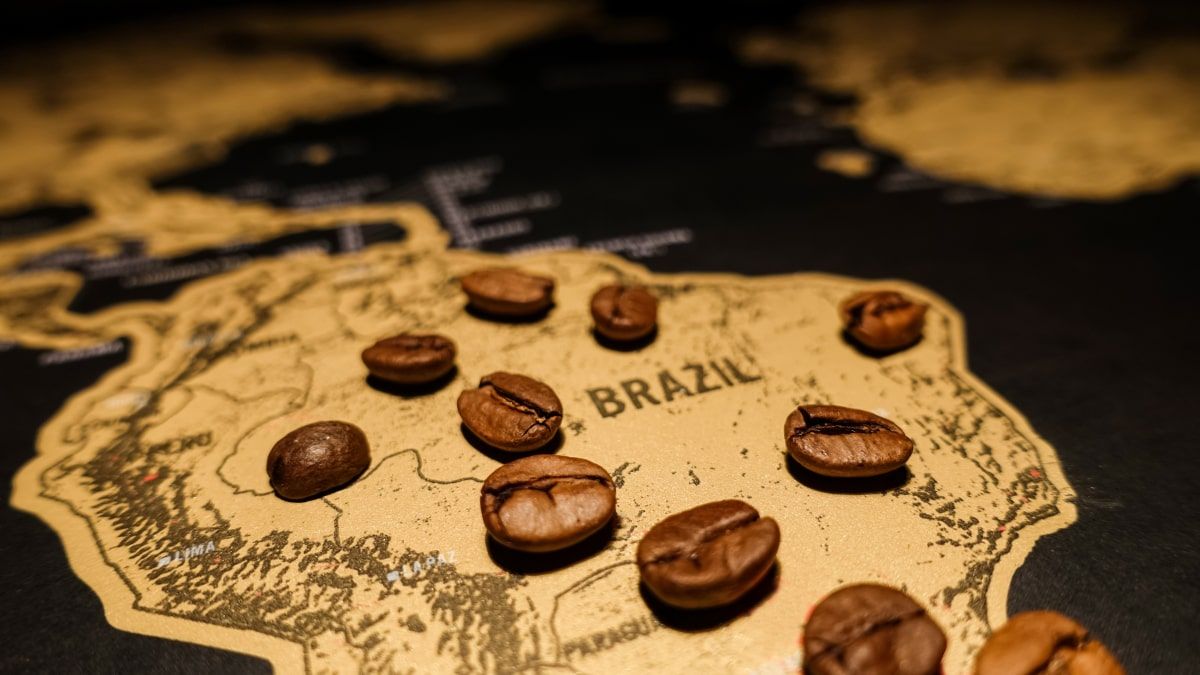
Brazil is the land of samba and a country known for parties and colours. But is their coffee just as colourful and festive? It’s a little both and. One thing is for sure, and that is that Brazil produces incredible amounts of coffee.
We come here with Kaffeteriet’s guide to Brazilian coffee. So read on if you want to know why Brazil’s coffee can be both festive and sometimes a bit of a light switch.
The main artery of coffee
Although Brazil is not the home country of coffee, it is still the country that has historically produced and exported the most coffee – for better or worse.
There have been many ups and downs in their production, which has depended on everything from weather conditions to competition parameters from other “suitors”. For a long time – especially in the 18th and 19th centuries – they have generally been heavy on the throne of coffee production and exports with up to as much as 40 per cent of world production.
Since then, far more players have entered the market, and as coffee has also become a delicacy that more and more people demand, Brazil’s coffee has come under greater pressure.
The production
Brazilian coffee has a reputation for being too much influenced by quantity rather than quality, although there are definitely some very delicate beans to take off.
Production has generally been too harsh, to ensure some production and export. In some coffee productions, whole stalks are harvested if most of the berries appear to be ripe – even if some of the berries are still unripe. At the same time, Brazil is a fairly flat country, which requires machine harvesting.
Machine harvesting is not entirely optimal, as berries that are not ripe and ready are also harvested in this process. These unripe berries, therefore, smoke on for the rest of the production.
For coffee that is roasted and ground long before sale, it does not make much of a difference. This kind of coffee ends up on the shelves in the supermarket anyway and has almost no taste because it is not fresh. But for speciality coffee, it is important that the berries are ripe and of good quality if you want the best taste
As I said, it is quite regional, so some farmers also produce in a more gentle and selective way while the design of the landscape can prevent machine use.
However, these farmers have had a hard time keeping up with the reputation that Brazilian coffee has gained in certain areas, while the gentle production is more expensive, which in turn makes the market price higher.
So it pays to read a little about the beans before you buy – e.g. where and how they are harvested and finished. For Brazil is a good coffee country, if you look for it.
Types and areas
Brazil mainly grows beans of the Arabica type and has hardly as many areas with Robusta production – which is also representative of the whole world.
Arabica and Robusta are coffee from two different plants (among over 120) and the general attitude is that Arabica is the most delicious. The robusta is, as the name suggests, the hardiest to diseases and can be grown under less demanding conditions.
The downside is the taste, which many believe has a lack of acid and a taste of wood and rubber. For the same reason, much of Robusta’s production also ends up in Instant coffees and is typically characterized by quantity rather than quality, which is probably also fair in relation to the plant’s survivability.
On the other hand, there are greater demands on the Arabica plant, which should preferably be grown and grown at specific heights and temperatures. It almost obviously affects the taste in a positive direction and will generally give a more sour and fruity coffee than Robusta coffee.
As I said, Brazil is one of the largest coffee-producing countries in the world, and therefore also has a wealth of regions in which they are grown – and in different qualities.
There are too many to mention in the post here, but I want to finally highlight a few of them that stand for some of the more delicious coffee beans:
Planalto de Bahia
Bahia is one of the northernmost coffee states in Brazil, which in 2009 accounted for 5 out of 10 of the best coffee beans at the “Cup of Excellence” competition, located in the region of Planalto de Bahia.
Definitely worth keeping an eye on when choosing coffee beans. The beans, which are grown in 700-1300 m in cooler temperatures (which prevent overripe), have many small productions that should grow quite good beans.
Matas de Minas
A region that has a lot of hilly terrains and prevents machine harvesting. The cultivation takes place at altitudes of 550-1200 m and requires hand picking, which gives good odds for well-sorted and delicate beans.
They are in a good period where they can benefit from these conditions, which are not found in many places in Brazil, which as I said are characterized by machine use. A region that is definitely worth looking for.
Go in search of Brazil’s festive coffee
Brazil is a country with both really good and not so good coffee. But if you pay attention to certain regions and keep an eye on how the coffee has been produced, then you can find some really exciting coffee beans in the festive country.



Comments are closed.